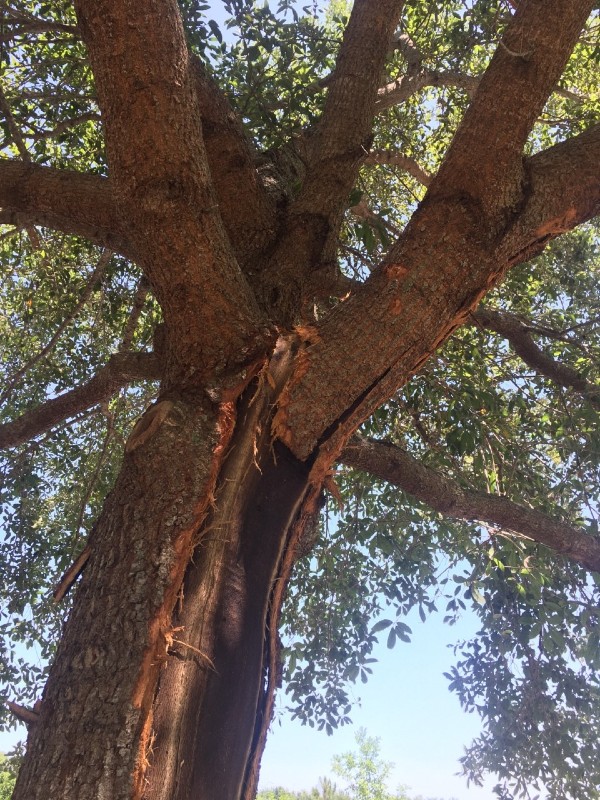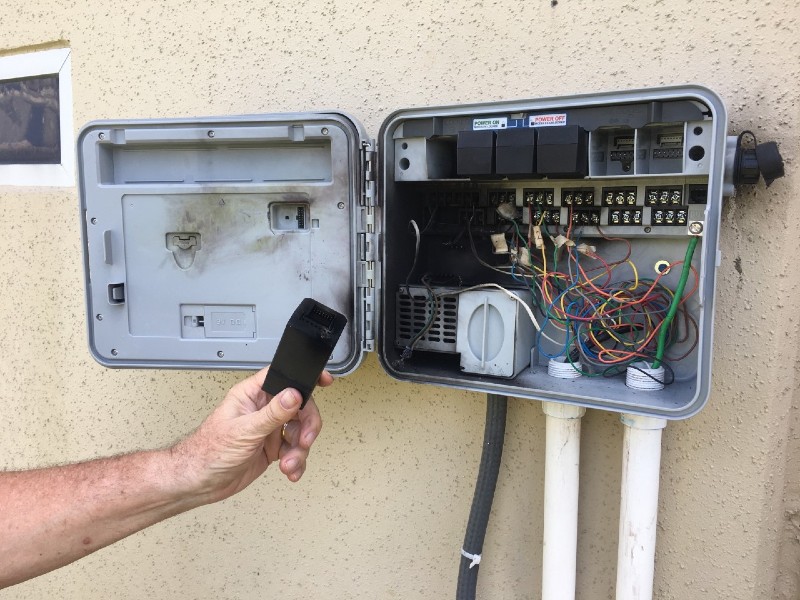STRIKE! BOOM! CRAAAACK! Yes, folks, that is the sound of Florida’s rainy season. Florida’s heavy summer rainfall certainly keeps plants growing like Jack’s beanstalk, but sometimes those skies are also laced with lightning. Frightening!
Florida does experience more lightning strikes than anywhere else in the US due to our hot and moist climate. When a thunderstorm comes through, we humans seek shelter, but our trees must weather the storm. It is common for trees to get struck by lightning. Trees are often one of the tallest features in the landscape. Lightning is an accumulation of positive and negative electrical charges in clouds, and sometimes those charges can connect with the ground. The energy from the ground tends to join forces with the energy from the sky by moving through the tallest objects on the ground. We can see the striking connection between Earth and sky when the lightning flashes!
Trees, especially the tallest trees or the ones in open areas, are like targets for lightning. With a temperature exceeding 50,000 degrees F, a flash of 300,000,000 volts, and a bombardment of charges moving between 200,000- 200,000,000 MPH… lightning is POWERFUL! It can splinter a tree, or even explode one! Envision those trees you see when driving through the countryside, the ones split in half, barely surviving. Those are typical victims of a lightning strike. While a tree gnarled in a vast pasture does not pose many risks to people or property, a tree in an urban landscape successfully singed by lightning could pose significant risks to people and property.
Hire a qualified professional
If a tree in your landscape may have been the victim of a lightning strike, you need to hire a professional with the ISA Tree Risk Assessment Qualification. The International Society of Arboriculture (ISA) certifies Arborists and offers a credential in Tree Risk Assessment Qualification.



Here is an example of the exploding power of lightning in the landscape here at UF/IFAS Extension Orange County in our Exploration Gardens. The lightning connected with a live oak where the gardens meet the open pasture. Unknown to anyone, the live oak had wrapped its roots around a 3 inch water line for years. As the bark blew off the trunk, the pipe burst, gushing a cascade of water into a nearby ditch. Furthermore, the controllers to the irrigation valve were nearby. The energetic current flowed from the strike location on the back of the property all the way to the main irrigation control box 600 feet away. The panel was blown off the controller and evidence of it lingers as black smoke graffitied to the wall.
More information about lightning and safety
National Geographic: Lightning Facts and Information
 0
0
